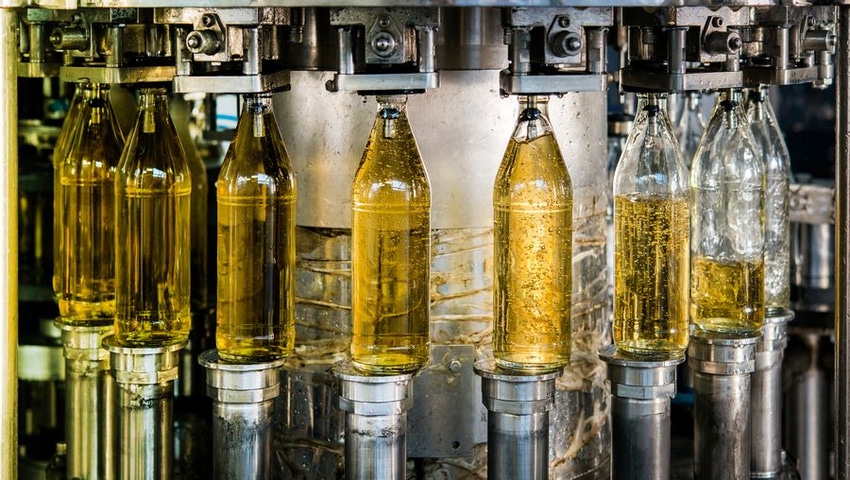Contract manufacturing for early-stage companies, in most cases, is the logical route to market to be effective for a brand that is managing capital and taking advantage of the efficiencies outsourcing offers.
October 27, 2017

Beverage brands that make source water, kombucha or a cold-pressed juice may want to keep manufacturing in house due to raw material location or technical expertise.
Cold fill is the prevalent choice with bottled water and carbonated soft drinks, and hot fill gives beverage brands the ability to offer juice, tea and functional drinks that are preservative free.
Aseptic is the choice for protein, milk-based and nut milk beverages, and fresh products such as cold-pressed juices typically use cold and high-pressure processing.
Contract manufacturing for early-stage companies is typically the logical route to effectively market for a brand that is managing capital and taking advantage of the efficiencies outsourcing offers. Included in the decision-making process is where brands should make its products and how much it should make. It is critical to understand from the start how the brand plans to launch its products, where its distribution is expected to be concentrated and how much capacity it needs to move the plan forward.
Sometimes, it makes sense for a beverage brand to manufacture its products in house. If a beverage brand is planning to launch a “source water,” it will most likely need its own our manufacturing facility. As an example, the brand finds a unique water supply in the Amazon coming from what is believed to be the earth’s largest underground freshwater reservoir (a true story). Just like Fiji, which is a similar example, the capital needs to be a part of the launch of this brand. Building a co-packing facility and manufacturing at the source is imperative. This applies to any source water because transporting to a production facility could be costly or jeopardize the integrity of the supply.
Another example of a brand manufacturing its own beverage, at least to start, is with a kombucha or a cold-pressed juice. Both examples require hands-on techniques. While there are co-packers specializing in these areas, they are tougher to find and present their own issues, especially when scaling. A successful beverage company, Califia Farms, raised US$50 million, initially, to build its own plant. This is certainly an option, and Greg Steltenpohl, co-founder and CEO, and his team differentiated Califia Farms’ packaging, which was driven by its own plant and the funding behind it.
While brands have been successful with their own manufacturing, contract manufacturing also has its benefits. When we think about beverage processing, several methods are available, driven by the type of product.
Cold fill is the prevalent choice with items such as bottled water, carbonated soft drinks and products with preservatives; however, consumers are looking less favorably on products with preservatives in today’s environment of clean packaging and labeling. Hot fill gives beverage brands the ability to offer juice, tea and functional drinks that are preservative free.
Aseptic is the choice for protein, milk-based and nut milk beverages. However, aseptic can be expensive. Extended shelf life is a good option for milk and chilled dairy products. And fresh products such as cold pressed juices are typically using cold and high-pressure processed. This method adds additional costs thereby increasing the retail pricing. In addition, processing brands need to consider the acidity or PH of the product. FDA stipulates that low-acid foods are a PH of 4.6 or below. Most processing methods require PH level to meet FDA requirements for food safety. That is with the exception of aseptically produced beverages, which enables brands to meet food safety requirements at 4.6 PH and above. Certain ingredients are difficult to meet the requirements of PH levels to satisfy food safety, and taste good at the same time. Thus, it makes sense to work with a formulator that knows the specifics and can commercialize a recipe to meet the guidelines.
Brands must understand all aspects of its supply chain to be most effective in choosing its manufacturing methods for a successful product launch. Brands need to evaluate all aspects, including its processing and where it will be merchandised on the shelf. It’s important to consider the cost of goods and what it takes to bring the product to market and to ask, “where are the geographic options, and how much will it cost to bring the product to market?” Be sure to understand these elements when evaluating a launch strategy. And, be prepared to outsource based on these factors.
Debbie Wildrick is chief strategy officer of MetaBrand, a world-class team of experts helping companies create, launch or grow food, beverage and supplement brands. Wildrick is a sales, marketing and operations executive and channel strategy specialist in the consumer packaged goods (CPG) industry with more than 30 years’ experience. She has had leadership roles at Fortune 500 companies including 7-Eleven Inc. and Tropicana North America (PepsiCo), as well as executive positions with several early stage brands. She is a board member of 10 years of the Network of Executive Women, and now is facilitating the Women Owned Emerging Business initiative.
About the Author(s)
You May Also Like




.png?width=800&auto=webp&quality=80&disable=upscale)